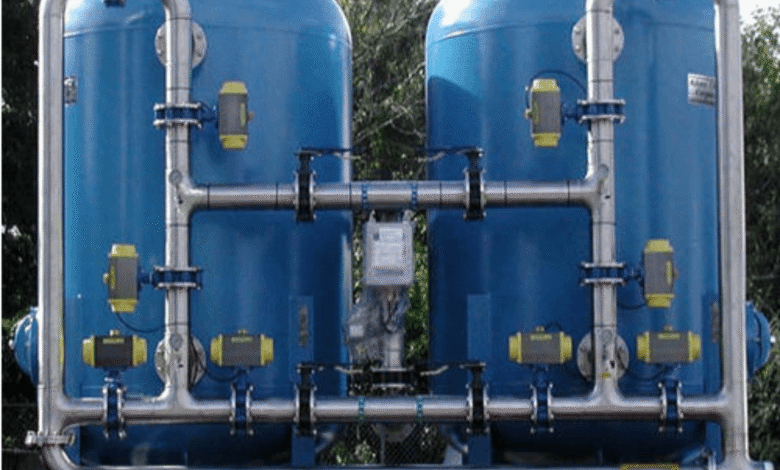Uncovering Hidden Threats: Lead, Bacteria, and PFAS in Water – What You Need to Know

We all rely on clean, safe water, but what if the water coming from your tap isn’t as pure as it seems? From the safety of drinking water to the quality of water used for daily chores, we trust that it’s free from harmful contaminants. Yet, in many places, lead in water, bacteria in water, and PFAS in water can pose serious health risks. These invisible dangers might be lurking in your supply without you even knowing it.
If you’ve ever thought twice about that glass of water, or wondered whether your water could be cleaner, you’re not alone. In this article, we’ll dive into why these contaminants are a serious concern, how they affect your health, and what you can do to protect yourself and your family.
The Hidden Dangers of Lead in Water
Lead in drinking water is a problem that has been in the spotlight for years, especially after the Flint, Michigan crisis brought national attention to the issue. But while Flint made headlines, lead in water is a problem that continues to affect homes across the U.S.
Lead in water typically comes from old plumbing systems, particularly those with lead pipes or lead solder. If you live in an older home, the chances of having lead in your drinking water are higher, as many older cities and towns still have aging infrastructure. The problem is, lead doesn’t just stay in the pipes—it can leach into the water, contaminating it over time.
But why should we be concerned about lead in water? Even at low levels, lead can cause serious health problems, especially in children. It can affect brain development, leading to learning disabilities, behavior issues, and even developmental delays. In adults, long-term exposure to lead can cause high blood pressure, kidney damage, and other health complications.
The worst part is that lead has no taste or smell, so it can go unnoticed until it’s too late. If you’re living in an older home or suspect your water may have been contaminated by lead, it’s essential to get your water tested and take action to reduce the risks.
Bacteria in Water: A Risk You Can’t Ignore
Next on our list of water threats is bacteria in water. While municipal water treatment plants do their best to kill harmful bacteria with chlorine or other disinfectants, these systems aren’t foolproof. Bacteria can still sneak into the water supply, especially after extreme weather events like heavy rains or flooding, which can overwhelm treatment facilities.
Common bacterial culprits include E. coli, Salmonella, and Campylobacter, which can cause a range of illnesses such as stomach cramps, vomiting, diarrhea, and fever. The presence of bacteria in water can lead to serious waterborne diseases, making it vital to ensure your water is bacteria-free.
Even more concerning is the fact that some homes rely on well water, which is not always disinfected by a treatment plant. If you rely on a private well, the responsibility for water quality falls on you. Wells can be contaminated by nearby septic systems, animal waste, or even flooding, which means regular water testing is crucial to ensure your water stays safe.
Testing for bacteria is straightforward, and many local health departments offer testing kits or services. If you find bacteria in your water, treatment options like UV disinfection systems, chlorination, or advanced filtration systems can effectively remove harmful microorganisms, restoring the safety of your water supply.
PFAS in Water: The Forever Chemicals
If you’ve been following news about environmental contamination, you’ve probably heard about PFAS in water. PFAS, or per- and polyfluoroalkyl substances, are a group of human-made chemicals that have been widely used in products like non-stick cookware, water-repellent clothing, firefighting foam, and food packaging.
PFAS are incredibly persistent in the environment, earning them the nickname “forever chemicals.” These substances don’t break down over time and can accumulate in the water, soil, and even the human body. Unfortunately, drinking water is one of the primary ways people are exposed to PFAS, particularly if they live near industrial areas or military bases where these chemicals were used in firefighting foam.
The health risks associated with PFAS are alarming. Studies have linked PFAS exposure to various health problems, including immune system suppression, liver damage, and an increased risk of cancer. The worst part is that PFAS contamination is widespread, affecting millions of people across the country. In fact, the U.S. Environmental Protection Agency (EPA) has set guidelines to help limit exposure, but the problem persists.
To reduce the risk of PFAS exposure, water purification systems such as activated carbon filters or reverse osmosis units can be effective at removing these chemicals. If you’re concerned about PFAS in your water, getting your water tested is the first step in determining the extent of contamination and finding the right treatment solutions.
How to Protect Yourself and Your Family
Now that we’ve covered the dangers of lead in water, bacteria in water, and PFAS in water, it’s time to talk about solutions. Fortunately, there are steps you can take to ensure the safety of your water, no matter what contaminants are present.
- Get Your Water Tested
The first step in tackling any water issue is testing. If you’re on well water, regular testing is even more important, as you have more control over your water source. For those on municipal water, while treatment plants do their best to meet safety standards, it’s still a good idea to have your water tested, especially if you suspect contamination. - Install Water Filtration Systems
Depending on the contaminants found in your water, a water filtration system may be necessary. For lead in water, a reverse osmosis system or a lead-specific filter can effectively remove harmful metals. For bacteria in water, UV purifiers or chlorination can kill harmful microorganisms. If you’re dealing with PFAS in water, activated carbon filters or reverse osmosis systems are among the most effective treatments available. - Consider Professional Water Treatment Services
If you’re unsure about which system to choose or how to properly maintain it, working with a professional clean water company or water treatment expert can make a world of difference. These professionals can test your water, recommend appropriate filtration systems, and even handle the installation and maintenance for you. - Maintain Your Water System
Once you have a filtration system in place, regular maintenance is essential to keep it working effectively. Replace filters as recommended, and perform any necessary system checks to ensure everything is running smoothly.
Conclusion: Stay Proactive About Water Safety
Water is something we can’t live without, and ensuring that it’s free of lead in water, bacteria in water, and PFAS in water is crucial for maintaining health and well-being. The good news is that with the right testing, water purification, and proper filtration systems, you can protect your family and your home from these hidden water threats.
Don’t wait until there’s a problem—take the first step toward safer, cleaner water today. By staying proactive and investing in the right solutions, you can rest easy knowing that the water you drink, cook with, and bathe in is safe and pure. After all, your health and peace of mind are worth it.



